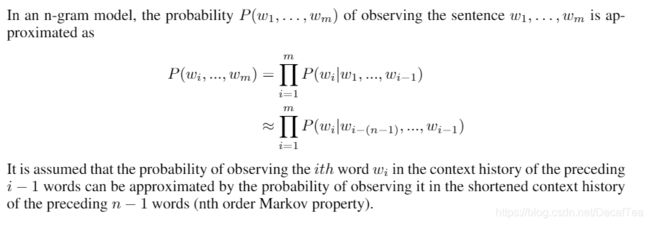- 略说NLP引入公理模型的可行性
金井PRATHAMA
知识图谱与NLP自然语言处理人工智能知识图谱
在自然语言处理(NLP)的深层语义分析中,公理化体系的引入具有理论可行性,但其实际应用仍面临挑战。以下从公理模型的设计思路、关键技术要点及注意事项三个方面展开分析,结合搜索结果的多个相关技术点进行综合说明:一、公理模型在深层语义分析中的设计思路公理的定义与语义形式化公理模型需以形式化逻辑为基础,定义语义分析中的原始概念(如谓词、实体、关系)和推理规则。例如:原始概念:将语义角色(如施事者、受事者)
- NLP中情感分析如何结合知识图谱在跨文化领域提升观念分析和价值判断的准确性?
情感分析结合知识图谱,能够显著提升观念分析和价值判断的准确性。这一融合的核心在于利用知识图谱的结构化语义网络,为情感分析提供深层语境、实体关联和领域知识支撑。以下是具体机制和应用场景的分析:一、知识图谱如何提升情感分析的语义理解1.解决歧义与上下文依赖问题:情感词(如“冷”)在不同语境中含义不同(“服务态度冷”表负面,“冷静分析”表中性)。方案:知识图谱通过实体链接识别文本中的对象(如“服务态度”
- SBERT、CoSENT和BETR以及transformers的区别和联系
panshengnan
NLPnlptransformer
SBERT、CoSENT、BETR和Transformers的区别和联系这几个模型(SBERT、CoSENT、BETR)和框架(Transformers)都是围绕自然语言处理(NLP)的句子嵌入和语义理解任务展开的。它们的联系主要在于基于Transformer架构,并针对特定任务做了优化;区别则在于目标任务、优化策略、训练方法和适用场景等方面。1.联系基于Transformer架构:它们的核心编码
- 入门大模型神器:开源项目Happy LLM保姆级教程!
Happy-LLMHappy-LLM——从零开始的大语言模型原理与实践教程。本项目是一个系统性的LLM学习教程,将从NLP的基本研究方法出发,根据LLM的思路及原理逐层深入,依次为读者剖析LLM的架构基础和训练过程。同时,我们会结合目前LLM领域最主流的代码框架,演练如何亲手搭建、训练一个LLM,期以实现授之以鱼,更授之以渔。希望大家能从这本书开始走入LLM的浩瀚世界,探索LLM的无尽可能。特点•
- 【原创】下雨天要游泳
饶金霞家庭教育心理咨询
下午,我照着昨天与小儿的约定,在四点半,就来到幼儿园门口接孩子。老师打开大门,孩子从教室里走出来,一见到我就问:“老妈,泳衣准备好了吗?”我半蹲下来拥抱他说:“都放在车上啦!”儿子在我额头上亲一口说:“你真是世界上最讲信用的好妈妈!”我有点怀疑我这儿子有NLP的基因,总是能及时地给沟通者作出良好的回应,而且还会用米尔顿。其实看着这满天的乌云,我心里还在嘀咕,这场大雨可能不会等到我们去游泳场。果不其
- LLM系统性学习完全指南(初学者必看系列)
GA琥珀
LLM学习人工智能语言模型
前言这篇文章将系统性的讲解LLM(LargeLanguageModels,LLM)的知识和应用。我们将从支撑整个领域的数学与机器学习基石出发,逐步剖析自然语言处理(NLP)的经典范式,深入探究引发革命的Transformer架构,并按时间顺序追溯从BERT、GPT-2到GPT-4、Llama及Gemini等里程碑式模型的演进。随后,我们将探讨如何将这些强大的基础模型转化为实用、安全的应用,涵盖对齐
- AI数字人系统开发上线全攻略:从0到1全流程解析
v_qutudy
人工智能AI系统开发AI数字人开发
一、需求分析:定义数字人核心能力1.1功能规划矩阵模块基础功能进阶功能形象生成2D/3D建模实时表情捕捉与驱动语音交互TTS语音合成情感识别与应激反应动作系统预设动作库骨骼动画与物理引擎智能决策规则引擎强化学习驱动决策多模态交互文本/语音输入AR/VR空间交互1.2非功能性指标实时性:唇形同步延迟B[语音识别]A-->C[姿态检测]A-->D[文本理解]B-->E[NLP引擎]C-->F[动作解析
- Java NLP炼金术:从词袋到深度学习,构建AI时代的语言魔方
墨夶
Java学习资料人工智能java自然语言处理
一、JavaNLP的“三剑客”:框架与工具链1.1ApacheOpenNLP:传统NLP的“瑞士军刀”目标:用词袋模型实现文本分类与实体识别代码实战:文档分类器的“炼成术”//OpenNLP文档分类器(基于词袋模型)importopennlp.tools.doccat.*;importopennlp.tools.util.*;publicclassDocumentClassifier{//训练模型
- 深度学习模型表征提取全解析
ZhangJiQun&MXP
教学2024大模型以及算力2021AIpython深度学习人工智能pythonembedding语言模型
模型内部进行表征提取的方法在自然语言处理(NLP)中,“表征(Representation)”指将文本(词、短语、句子、文档等)转化为计算机可理解的数值形式(如向量、矩阵),核心目标是捕捉语言的语义、语法、上下文依赖等信息。自然语言表征技术可按“静态/动态”“有无上下文”“是否融入知识”等维度划分一、传统静态表征(无上下文,词级为主)这类方法为每个词分配固定向量,不考虑其在具体语境中的含义(无法解
- 【AI大模型】LLM模型架构深度解析:BERT vs. GPT vs. T5
我爱一条柴ya
学习AI记录ai人工智能AI编程python
引言Transformer架构的诞生(Vaswanietal.,2017)彻底改变了自然语言处理(NLP)。在其基础上,BERT、GPT和T5分别代表了三种不同的模型范式,主导了预训练语言模型的演进。理解它们的差异是LLM开发和学习的基石。一、核心架构对比特性BERT(BidirectionalEncoder)GPT(GenerativePre-trainedTransformer)T5(Text
- NLP_知识图谱_大模型——个人学习记录
macken9999
自然语言处理知识图谱大模型自然语言处理知识图谱学习
1.自然语言处理、知识图谱、对话系统三大技术研究与应用https://github.com/lihanghang/NLP-Knowledge-Graph深度学习-自然语言处理(NLP)-知识图谱:知识图谱构建流程【本体构建、知识抽取(实体抽取、关系抽取、属性抽取)、知识表示、知识融合、知识存储】-元気森林-博客园https://www.cnblogs.com/-402/p/16529422.htm
- 数据安全审计平台的三大关键技术:日志分析、行为监测与智能告警
KKKlucifer
安全算法
在数字化浪潮中,数据安全审计是企业守护核心资产的“瞭望塔”。通过日志分析、行为监测、智能告警三大技术,数据安全审计平台构建起“全流程监控-异常识别-快速响应”的闭环,为数据安全筑牢防线。以下从技术原理、实践价值与行业应用展开解析。日志分析:数据安全的“DNA图谱”1.多源日志融合技术实现:通过Agent采集操作系统、数据库、网络设备等200+日志源,利用正则表达式、NLP技术解析非结构化日志(如“
- 【论文阅读笔记】TimesURL: Self-supervised Contrastive Learning for Universal Time Series
少写代码少看论文多多睡觉
#论文阅读笔记论文阅读笔记
TimesURL:Self-supervisedContrastiveLearningforUniversalTimeSeriesRepresentationLearning摘要 学习适用于多种下游任务的通用时间序列表示,并指出这在实际应用中具有挑战性但也是有价值的。最近,研究人员尝试借鉴自监督对比学习(SSCL)在计算机视觉(CV)和自然语言处理(NLP)中的成功经验,以解决时间序列表示的问题。
- NLP-D7-李宏毅机器学习---X-Attention&&GAN&BERT&GPT
甄小胖
机器学习自然语言处理机器学习bert
—0521今天4:30就起床了!真的是迫不及待想看新的课程!!!昨天做人脸识别系统的demo查资料的时候,发现一个北理的大四做cv的同学,差距好大!!!我也要努力呀!!不是比较,只是别人可以做到这个程度,我也一定可以!!!要向他学习!!!开始看课程啦!-----0753看完了各种attention,由于attention自己计算的限制,当N很大的时候会产生计算速度问题,从各种不同角度(人工知识输入
- PyTorch 在 Python 自然语言处理中的运用
Python编程之道
Python编程之道pythonpytorch自然语言处理ai
PyTorch在Python自然语言处理中的运用关键词:PyTorch,Python,自然语言处理,深度学习,文本分类,情感分析摘要:本文全面探讨了PyTorch在Python自然语言处理(NLP)领域的运用。首先介绍了相关背景知识,包括目的范围、预期读者等内容。接着详细阐述了核心概念,如词嵌入、循环神经网络等,并给出了相应的原理示意图和流程图。深入讲解了核心算法原理,结合Python代码进行详细
- VIT视觉
妄想成为master
opencv目标检测机器学习数据挖掘语音识别人工智能计算机视觉
VisionTransformer视觉和语言(Vision-Language)NLPrompt:Noise-LabelPromptLearningforVision-LanguageModelsPaper:https://arxiv.org/abs/2412.01256Code:GitHub-qunovo/NLPromptPhysVLM:EnablingVisualLanguageModelsto
- RAG实战指南 Day 11:文本分块策略与最佳实践
在未来等你
RAG实战指南RAG检索增强生成文本分块语义分割文档处理NLP人工智能
【RAG实战指南Day11】文本分块策略与最佳实践文章标签RAG,检索增强生成,文本分块,语义分割,文档处理,NLP,人工智能,大语言模型文章简述文本分块是RAG系统构建中的关键环节,直接影响检索准确率。本文深入解析5种主流分块技术:1)固定大小分块的实现与调优技巧;2)基于语义的递归分割算法;3)文档结构感知的分块策略;4)LLM增强的智能分块方法;5)多模态混合内容处理方案。通过电商知识库和科
- 中文大模型的技术债问题
大鹏的NLP博客
大模型transformer大模型
中文大模型的技术债问题摘要随着中文大语言模型(LargeLanguageModels,LLMs)在自然语言处理(NLP)领域的广泛应用,其研发和部署过程中积累的“技术债”(TechnicalDebt)问题日益突出。本文系统性地分析了中文大模型在数据采集、预训练、微调、评估与部署等生命周期各阶段产生的技术债类型,包括代码复杂性、数据隐患、训练流程依赖、工具链碎片化、模型解释性差、隐性资源耦合等问题,
- AI 正在深度重构软件开发的底层逻辑和全生命周期,从技术演进、流程重构和未来趋势三个维度进行系统性分析
AI正在深度重构软件开发的底层逻辑和全生命周期,从需求分析到运维维护的每个环节都产生了范式级变革。以下从技术演进、流程重构和未来趋势三个维度进行系统性分析:一、AI重构软件开发全栈的技术图谱需求工程智能化NLP驱动的需求解析:GPT-4架构实现用户访谈转录自动转化为UML用例图,准确率达89%(微软2023内部数据)情感计算应用:基于BERT的意图识别模型可捕捉用户需求中的隐性情绪,需求变更预测准
- 新手向:中文语言识别的进化之路
自然语言处理(NLP)技术正在以前所未有的速度改变我们与机器的交互方式,而中文作为世界上使用人数最多的语言,其处理技术面临着独特的挑战与机遇。本文将全面剖析中文自然语言识别模型的发展历程、核心技术原理、当前应用现状以及未来发展趋势,带您深入了解这一改变人机交互方式的关键技术。一、中文NLP的特殊挑战:为什么中文处理如此困难?中文自然语言处理面临着一系列西方语言所不具备的特殊挑战,这些挑战直接影响了
- 深入详解 AI 与深度学习:从零开始掌握 BERT 模型架构
拉不拉斯AICoding
技术探索人工智能深度学习bert
深入详解AI与深度学习:从零开始掌握BERT模型架构引言在自然语言处理(NLP)领域,BERT(BidirectionalEncoderRepresentationsfromTransformers)是近年来最具影响力的模型之一。它通过双向上下文理解彻底改变了NLP任务的处理方式。本文将从基础概念到核心原理、应用场景和实践技巧,深入浅出地讲解BERT,帮助初学者快速掌握这一技术。一、BERT的核心
- Transformer模型架构深度讲解
Transformer是一种在自然语言处理(NLP)和深度学习中非常重要的模型架构。它首次由Vaswani等人于2017年提出,主要应用于序列到序列的任务(如机器翻译、文本生成、摘要生成等)。Transformer模型与传统的RNN(循环神经网络)和LSTM(长短时记忆网络)不同,它不依赖于时间步的顺序处理,而是完全基于“注意力机制”进行计算,这使得它在训练速度、并行化能力和长期依赖问题的处理上具
- AI人工智能浪潮中,GPT的技术优势凸显
AI学长带你学AI
人工智能gptai
AI人工智能浪潮中,GPT的技术优势凸显关键词:人工智能、GPT、自然语言处理、深度学习、Transformer、大语言模型、技术优势摘要:本文深入探讨了在人工智能浪潮中GPT(GenerativePre-trainedTransformer)系列模型的技术优势。我们将从GPT的核心架构出发,分析其独特的技术特点,包括自注意力机制、预训练-微调范式、零样本学习能力等。通过与传统NLP方法的对比,揭
- 自然语言处理-基于预训练模型的方法-笔记
自然语言处理-基于预训练模型的方法-笔记【下载地址】自然语言处理-基于预训练模型的方法-笔记《自然语言处理-基于预训练模型的方法》由哈尔滨工业大学出版,深入探讨了NLP领域的前沿技术与预训练模型的应用。本书系统介绍了预训练模型的基本概念、发展历程及常见模型的原理,并通过丰富的实践案例与代码实现,帮助读者掌握这些技术在自然语言处理任务中的实际应用。无论是初学者、研发人员,还是希望提升NLP能力的研究
- 大语言模型应用指南:ReAct 框架
AI大模型应用实战
javapythonjavascriptkotlingolang架构人工智能
大语言模型应用指南:ReAct框架关键词:大语言模型,ReAct框架,自然语言处理(NLP),模型融合,多模态学习,深度学习,深度学习框架1.背景介绍1.1问题由来近年来,深度学习技术在自然语言处理(NLP)领域取得了显著进展。尤其是大语言模型(LargeLanguageModels,LLMs),如BERT、GPT系列等,通过在大规模无标签数据上进行预训练,获得了强大的语言理解和生成能力。然而,预
- 大语言模型原理基础与前沿 基于语言反馈进行微调
AI天才研究院
计算AI大模型企业级应用开发实战AI人工智能与大数据计算科学神经计算深度学习神经网络大数据人工智能大型语言模型AIAGILLMJavaPython架构设计AgentRPA
大语言模型原理基础与前沿基于语言反馈进行微调作者:禅与计算机程序设计艺术/ZenandtheArtofComputerProgramming1.背景介绍1.1问题的由来随着深度学习技术的飞速发展,自然语言处理(NLP)领域取得了显著的进展。大语言模型(LargeLanguageModels,LLMs)如GPT-3、BERT等在各项NLP任务上取得了令人瞩目的成绩。然而,如何进一步提高大语言模型的理
- 从新闻到知识图谱:用大模型和知识工程“八步成诗”打造科技并购大脑
许泽宇的技术分享
知识图谱科技人工智能
一句话摘要:本文带你用现代NLP和知识图谱技术,把科技公司并购新闻变成结构化的知识大脑,过程全景揭秘,理论与实战齐飞,代码只用伪代码,干货与段子齐发,助你成为AI知识工程老司机!前言:为什么要把新闻变成知识图谱?想象一下,你是个投资分析师,老板让你一周内梳理全球科技并购大事件,找出谁在买谁、花了多少钱、背后有哪些大佬、涉及哪些新技术……你会怎么做?A.手动Ctrl+F,Excel狂敲,熬夜爆肝?B
- Longformer: The Long-Document Transformer(2020-4-10)
不负韶华ღ
深度学习(NLP)transformer深度学习人工智能
模型介绍目前基于Transformer的预训练模型在各项NLP任务纷纷取得更好的效果,这些成功的部分原因在于Self-Attention机制,它运行模型能够快速便捷地从整个文本序列中捕获重要信息。然而传统的Self-Attention机制的时空复杂度与文本的序列长度呈平方的关系,这在很大程度上限制了模型的输入不能太长,因此需要将过长的文档进行截断传入模型进行处理,例如BERT中能够接受的最大序列长
- 搜索架构中的NLP技术:提升搜索准确性的关键
搜索引擎技术
架构自然语言处理人工智能ai
搜索架构中的NLP技术:提升搜索准确性的关键关键词:搜索架构、NLP技术、查询理解、语义搜索、相关性排序、意图识别、BERT模型摘要:本文将深入探讨现代搜索架构中NLP技术的核心应用,从查询理解到结果排序的全流程,揭示NLP如何提升搜索准确性。我们将通过生动的比喻解释复杂概念,分析关键技术原理,并提供实际代码示例,帮助读者全面理解搜索系统背后的NLP魔法。背景介绍目的和范围本文旨在解析NLP技术在
- 探索AI人工智能医疗NLP实体识别系统的架构设计
AI学长带你学AI
人工智能自然语言处理easyuiai
探索AI人工智能医疗NLP实体识别系统的架构设计关键词:人工智能、医疗NLP、实体识别、系统架构、深度学习、自然语言处理、医疗信息化摘要:本文将深入探讨医疗领域NLP实体识别系统的架构设计。我们将从基础概念出发,逐步解析医疗文本处理的特殊性,详细介绍实体识别技术的核心原理,并通过实际案例展示如何构建一个高效可靠的医疗实体识别系统。文章还将探讨当前技术面临的挑战和未来发展方向,为医疗AI领域的从业者
- JVM StackMapTable 属性的作用及理解
lijingyao8206
jvm字节码Class文件StackMapTable
在Java 6版本之后JVM引入了栈图(Stack Map Table)概念。为了提高验证过程的效率,在字节码规范中添加了Stack Map Table属性,以下简称栈图,其方法的code属性中存储了局部变量和操作数的类型验证以及字节码的偏移量。也就是一个method需要且仅对应一个Stack Map Table。在Java 7版
- 回调函数调用方法
百合不是茶
java
最近在看大神写的代码时,.发现其中使用了很多的回调 ,以前只是在学习的时候经常用到 ,现在写个笔记 记录一下
代码很简单:
MainDemo :调用方法 得到方法的返回结果
- [时间机器]制造时间机器需要一些材料
comsci
制造
根据我的计算和推测,要完全实现制造一台时间机器,需要某些我们这个世界不存在的物质
和材料...
甚至可以这样说,这种材料和物质,我们在反应堆中也无法获得......
- 开口埋怨不如闭口做事
邓集海
邓集海 做人 做事 工作
“开口埋怨,不如闭口做事。”不是名人名言,而是一个普通父亲对儿子的训导。但是,因为这句训导,这位普通父亲却造就了一个名人儿子。这位普通父亲造就的名人儿子,叫张明正。 张明正出身贫寒,读书时成绩差,常挨老师批评。高中毕业,张明正连普通大学的分数线都没上。高考成绩出来后,平时开口怨这怨那的张明正,不从自身找原因,而是不停地埋怨自己家庭条件不好、埋怨父母没有给他创造良好的学习环境。
- jQuery插件开发全解析,类级别与对象级别开发
IT独行者
jquery开发插件 函数
jQuery插件的开发包括两种: 一种是类级别的插件开发,即给
jQuery添加新的全局函数,相当于给
jQuery类本身添加方法。
jQuery的全局函数就是属于
jQuery命名空间的函数,另一种是对象级别的插件开发,即给
jQuery对象添加方法。下面就两种函数的开发做详细的说明。
1
、类级别的插件开发 类级别的插件开发最直接的理解就是给jQuer
- Rome解析Rss
413277409
Rome解析Rss
import java.net.URL;
import java.util.List;
import org.junit.Test;
import com.sun.syndication.feed.synd.SyndCategory;
import com.sun.syndication.feed.synd.S
- RSA加密解密
无量
加密解密rsa
RSA加密解密代码
代码有待整理
package com.tongbanjie.commons.util;
import java.security.Key;
import java.security.KeyFactory;
import java.security.KeyPair;
import java.security.KeyPairGenerat
- linux 软件安装遇到的问题
aichenglong
linux遇到的问题ftp
1 ftp配置中遇到的问题
500 OOPS: cannot change directory
出现该问题的原因:是SELinux安装机制的问题.只要disable SELinux就可以了
修改方法:1 修改/etc/selinux/config 中SELINUX=disabled
2 source /etc
- 面试心得
alafqq
面试
最近面试了好几家公司。记录下;
支付宝,面试我的人胖胖的,看着人挺好的;博彦外包的职位,面试失败;
阿里金融,面试官人也挺和善,只不过我让他吐血了。。。
由于印象比较深,记录下;
1,自我介绍
2,说下八种基本类型;(算上string。楼主才答了3种,哈哈,string其实不是基本类型,是引用类型)
3,什么是包装类,包装类的优点;
4,平时看过什么书?NND,什么书都没看过。。照样
- java的多态性探讨
百合不是茶
java
java的多态性是指main方法在调用属性的时候类可以对这一属性做出反应的情况
//package 1;
class A{
public void test(){
System.out.println("A");
}
}
class D extends A{
public void test(){
S
- 网络编程基础篇之JavaScript-学习笔记
bijian1013
JavaScript
1.documentWrite
<html>
<head>
<script language="JavaScript">
document.write("这是电脑网络学校");
document.close();
</script>
</h
- 探索JUnit4扩展:深入Rule
bijian1013
JUnitRule单元测试
本文将进一步探究Rule的应用,展示如何使用Rule来替代@BeforeClass,@AfterClass,@Before和@After的功能。
在上一篇中提到,可以使用Rule替代现有的大部分Runner扩展,而且也不提倡对Runner中的withBefores(),withAfte
- [CSS]CSS浮动十五条规则
bit1129
css
这些浮动规则,主要是参考CSS权威指南关于浮动规则的总结,然后添加一些简单的例子以验证和理解这些规则。
1. 所有的页面元素都可以浮动 2. 一个元素浮动后,会成为块级元素,比如<span>,a, strong等都会变成块级元素 3.一个元素左浮动,会向最近的块级父元素的左上角移动,直到浮动元素的左外边界碰到块级父元素的左内边界;如果这个块级父元素已经有浮动元素停靠了
- 【Kafka六】Kafka Producer和Consumer多Broker、多Partition场景
bit1129
partition
0.Kafka服务器配置
3个broker
1个topic,6个partition,副本因子是2
2个consumer,每个consumer三个线程并发读取
1. Producer
package kafka.examples.multibrokers.producers;
import java.util.Properties;
import java.util.
- zabbix_agentd.conf配置文件详解
ronin47
zabbix 配置文件
Aliaskey的别名,例如 Alias=ttlsa.userid:vfs.file.regexp[/etc/passwd,^ttlsa:.:([0-9]+),,,,\1], 或者ttlsa的用户ID。你可以使用key:vfs.file.regexp[/etc/passwd,^ttlsa:.: ([0-9]+),,,,\1],也可以使用ttlsa.userid。备注: 别名不能重复,但是可以有多个
- java--19.用矩阵求Fibonacci数列的第N项
bylijinnan
fibonacci
参考了网上的思路,写了个Java版的:
public class Fibonacci {
final static int[] A={1,1,1,0};
public static void main(String[] args) {
int n=7;
for(int i=0;i<=n;i++){
int f=fibonac
- Netty源码学习-LengthFieldBasedFrameDecoder
bylijinnan
javanetty
先看看LengthFieldBasedFrameDecoder的官方API
http://docs.jboss.org/netty/3.1/api/org/jboss/netty/handler/codec/frame/LengthFieldBasedFrameDecoder.html
API举例说明了LengthFieldBasedFrameDecoder的解析机制,如下:
实
- AES加密解密
chicony
加密解密
AES加解密算法,使用Base64做转码以及辅助加密:
package com.wintv.common;
import javax.crypto.Cipher;
import javax.crypto.spec.IvParameterSpec;
import javax.crypto.spec.SecretKeySpec;
import sun.misc.BASE64Decod
- 文件编码格式转换
ctrain
编码格式
package com.test;
import java.io.File;
import java.io.FileInputStream;
import java.io.FileOutputStream;
import java.io.IOException;
import java.io.InputStream;
import java.io.OutputStream;
- mysql 在linux客户端插入数据中文乱码
daizj
mysql中文乱码
1、查看系统客户端,数据库,连接层的编码
查看方法: http://daizj.iteye.com/blog/2174993
进入mysql,通过如下命令查看数据库编码方式: mysql> show variables like 'character_set_%'; +--------------------------+------
- 好代码是廉价的代码
dcj3sjt126com
程序员读书
长久以来我一直主张:好代码是廉价的代码。
当我跟做开发的同事说出这话时,他们的第一反应是一种惊愕,然后是将近一个星期的嘲笑,把它当作一个笑话来讲。 当他们走近看我的表情、知道我是认真的时,才收敛一点。
当最初的惊愕消退后,他们会用一些这样的话来反驳: “好代码不廉价,好代码是采用经过数十年计算机科学研究和积累得出的最佳实践设计模式和方法论建立起来的精心制作的程序代码。”
我只
- Android网络请求库——android-async-http
dcj3sjt126com
android
在iOS开发中有大名鼎鼎的ASIHttpRequest库,用来处理网络请求操作,今天要介绍的是一个在Android上同样强大的网络请求库android-async-http,目前非常火的应用Instagram和Pinterest的Android版就是用的这个网络请求库。这个网络请求库是基于Apache HttpClient库之上的一个异步网络请求处理库,网络处理均基于Android的非UI线程,通
- ORACLE 复习笔记之SQL语句的优化
eksliang
SQL优化Oracle sql语句优化SQL语句的优化
转载请出自出处:http://eksliang.iteye.com/blog/2097999
SQL语句的优化总结如下
sql语句的优化可以按照如下六个步骤进行:
合理使用索引
避免或者简化排序
消除对大表的扫描
避免复杂的通配符匹配
调整子查询的性能
EXISTS和IN运算符
下面我就按照上面这六个步骤分别进行总结:
- 浅析:Android 嵌套滑动机制(NestedScrolling)
gg163
android移动开发滑动机制嵌套
谷歌在发布安卓 Lollipop版本之后,为了更好的用户体验,Google为Android的滑动机制提供了NestedScrolling特性
NestedScrolling的特性可以体现在哪里呢?<!--[if !supportLineBreakNewLine]--><!--[endif]-->
比如你使用了Toolbar,下面一个ScrollView,向上滚
- 使用hovertree菜单作为后台导航
hvt
JavaScriptjquery.nethovertreeasp.net
hovertree是一个jquery菜单插件,官方网址:http://keleyi.com/jq/hovertree/ ,可以登录该网址体验效果。
0.1.3版本:http://keleyi.com/jq/hovertree/demo/demo.0.1.3.htm
hovertree插件包含文件:
http://keleyi.com/jq/hovertree/css
- SVG 教程 (二)矩形
天梯梦
svg
SVG <rect> SVG Shapes
SVG有一些预定义的形状元素,可被开发者使用和操作:
矩形 <rect>
圆形 <circle>
椭圆 <ellipse>
线 <line>
折线 <polyline>
多边形 <polygon>
路径 <path>
- 一个简单的队列
luyulong
java数据结构队列
public class MyQueue {
private long[] arr;
private int front;
private int end;
// 有效数据的大小
private int elements;
public MyQueue() {
arr = new long[10];
elements = 0;
front
- 基础数据结构和算法九:Binary Search Tree
sunwinner
Algorithm
A binary search tree (BST) is a binary tree where each node has a Comparable key (and an associated value) and satisfies the restriction that the key in any node is larger than the keys in all
- 项目出现的一些问题和体会
Steven-Walker
DAOWebservlet
第一篇博客不知道要写点什么,就先来点近阶段的感悟吧。
这几天学了servlet和数据库等知识,就参照老方的视频写了一个简单的增删改查的,完成了最简单的一些功能,使用了三层架构。
dao层完成的是对数据库具体的功能实现,service层调用了dao层的实现方法,具体对servlet提供支持。
&
- 高手问答:Java老A带你全面提升Java单兵作战能力!
ITeye管理员
java
本期特邀《Java特种兵》作者:谢宇,CSDN论坛ID: xieyuooo 针对JAVA问题给予大家解答,欢迎网友积极提问,与专家一起讨论!
作者简介:
淘宝网资深Java工程师,CSDN超人气博主,人称“胖哥”。
CSDN博客地址:
http://blog.csdn.net/xieyuooo
作者在进入大学前是一个不折不扣的计算机白痴,曾经被人笑话过不懂鼠标是什么,


